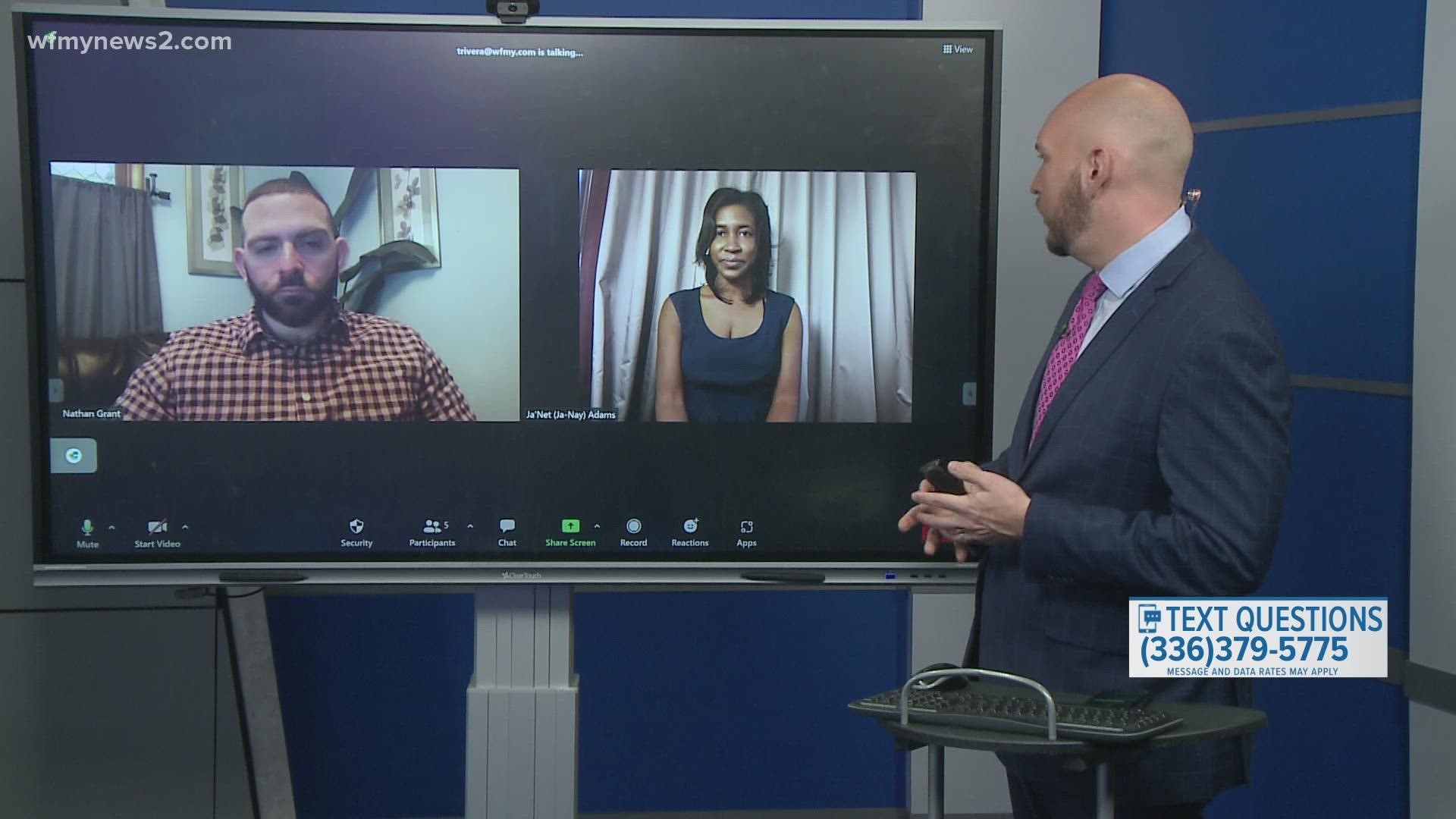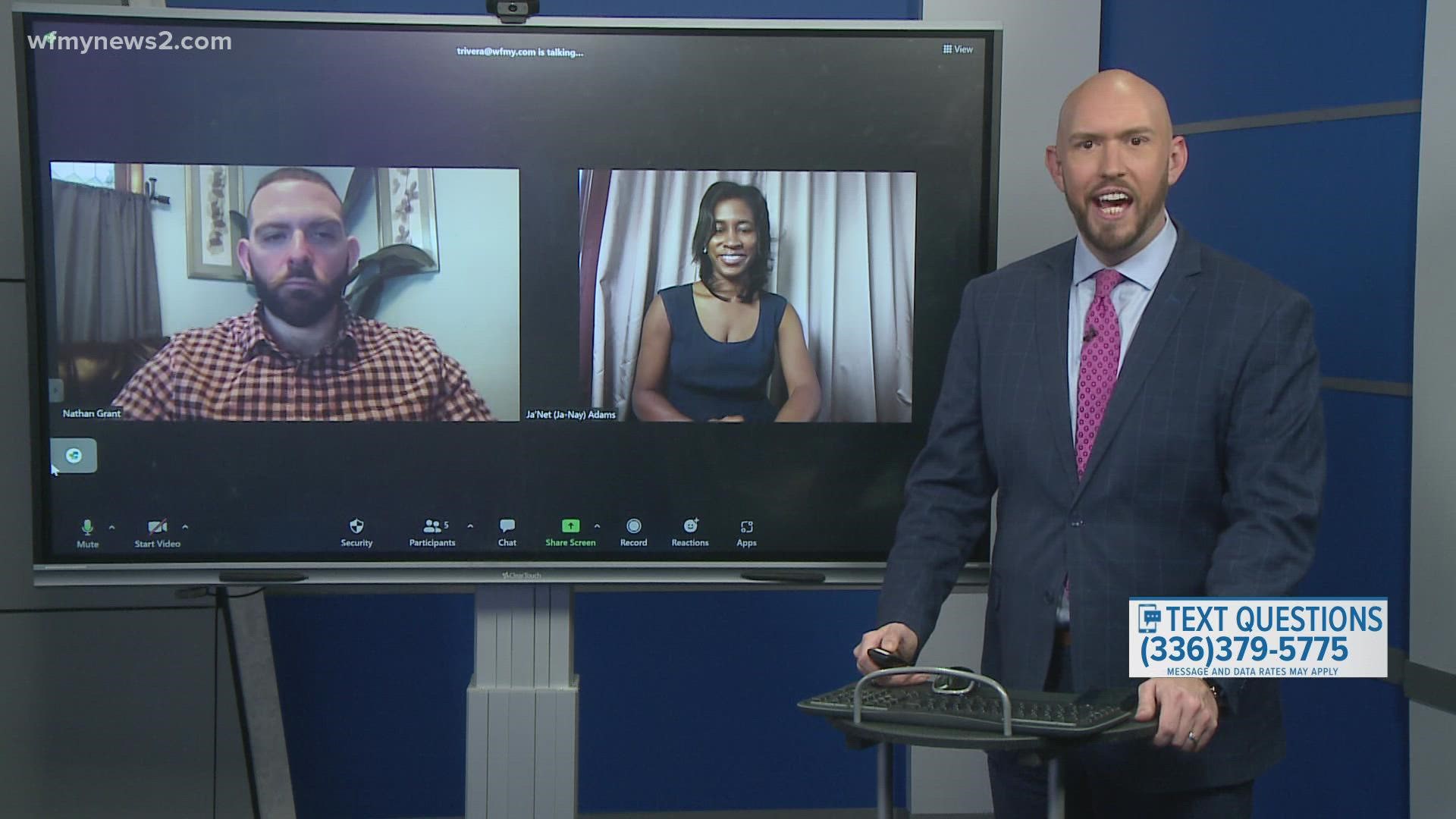GREENSBORO, N.C. — Ja'Net Adam from Debt Sucks University and Nathan Grant from MoneyTips answer all your money and debt questions.
Credit Cards
One of the hardest things for credit card users to overcome is the interest rate on their card. Depending on the card company, those interest rates could be pretty high. But there is a way to bring those interest rates down to zero percent---a balance transfer.
When used responsibly, balance transfers can be a great way to reduce the amount of interest you’re charged as you pay off debt. That means you must make all payments on time. Credit Card Insider has a full list of the cards that a best for a balance transfer.
Remember, it is okay to own multiple credit cards as long as you are able to keep up with them. But after you pay them off, don't close the account because it could negatively affect your credit score.
There are multiple things factored into your credit score. Payment history makes up 35%, amounts owed is 30%, 15% for the length of your credit history, 10% for new credit, and the remaining 10% goes to types of credit used. For example, buying a house or taking out a lease on a new car would be considered new credit.
If you or your child are a college student, a student credit card could help build credit. But remember, just like other cards you must pay them off to build up that credit. You can find a list of student credit cards here.
What to know about store credit cards
Typically, the interest rates on a store credit card are higher than on a regular credit card. For example, the APR, annual percentage rate, of a TJ Maxx card is 26.99%. A COSTCO Anywhere VISA card has an APR of 15.24%.
Credit Card Insider surveyed shoppers to see what payment methods people use most.
57% use credit cards
34% use their debit card
Saving Money
Cut It Back:
"The easiest way to find extra money is to look at the money you spend in your everyday life. Many people don't even realize how much money they actually spend. If you need extra money for an emergency fund then take the next couple of weeks and track every penny that your household spends," Adams said. "Once you see how much money is being spent in different categories then you can start to cut back in those categories."
Make sure you put the money you save by cutting back into a savings account.
Sell It All:
"If you go through your entire spending plan cutting back on expenses and you still don't have $1000 or $1500 saved then you need to take the next step and sell the "stuff" you no longer want," Adams said.
"That "stuff" could be clothes, shoes, sports equipment, music instruments, artwork, jewelry, electronics, pretty much anything that someone will buy from you. If you have anything of value that is just sitting around collecting dust then go sell it and put that money in your savings account," Adams said.
Increase Your Work Hours:
"No one likes to hear this tip especially if they don't like their job, but one way to make more money is to increase your work hours or to request overtime. If that is not an option then you may need to look for a second job," Adams said. "Understand this is not permanent and you are only taking on the extra hours in order to get yourself in a better financial position."
Student Loans
Who is eligible?
People who work in the public sector including teachers, nurses, or social workers as well as people who have government jobs or work at a non-profit.
What changed?
"The Department of Education is looking at all loans that have been under the Public Service Loan Forgiveness Program since 2007. They are reviewing each one to see if student loan servicers made mistakes in denying debt forgiveness. Thanks to this action, $4 billion of debt could be wiped out for 50,000 borrowers and another 550,000+ could see the length of the payments they have left decrease dramatically," Adams said.
Here's what you need to do:
"If you work in the public sector, you need to take action immediately," Adams said.
Go to the official site for this opportunity: www.studentaid.gov/pslfwaiver.
"This link will help you determine if you qualify as well as if your employer qualifies. This is also the website where you need to fill out the waiver which is temporary. The waiver expires October 31, 2022, so you have a limited time to take advantage of this opportunity," Adams said.




